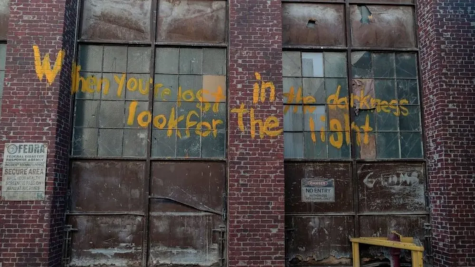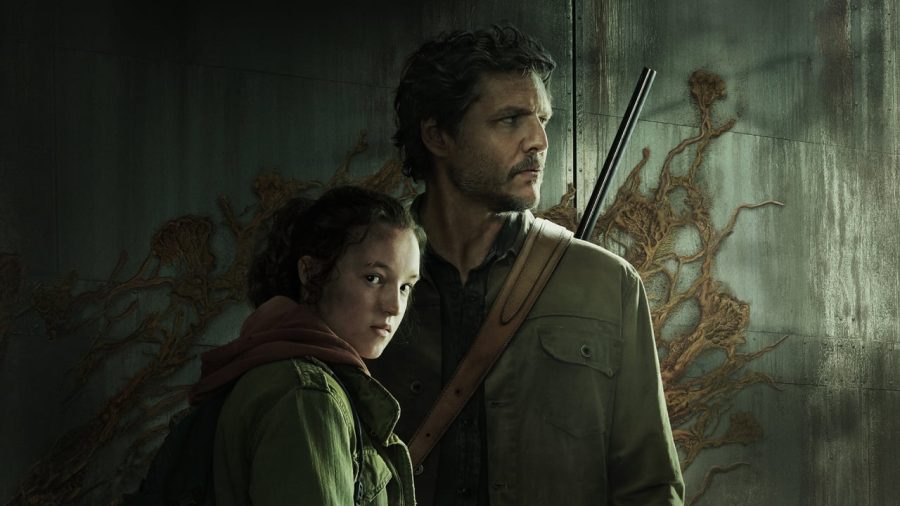The Last of Good Adaptations: HBO’s The Last of Us
June 9, 2023
As David Attenborough charmingly narrated on BBC’s Planet Earth, ophiocordyceps unilateralis, otherwise known as cordyceps, is a parasitic fungus that seizes the mind of an ant in order to puppeteer the devastation of its own population. Once the ant is infected and no longer in control of its own body, spores scarily similar to science-fiction sprout from its vessel now solely meant to spread the fungi as far and wide as possible. This zombification can decimate entire colonies, turning their brethren into mutilated hosts condemned to bring cycles upon cycles of destruction
Fortunately, cordyceps can only withstand an internal temperature of under ninety-four degrees, meaning it’s harmless to our comfortably ninety-eight degrees bodies. But what if that were to change? What if the fungus were to evolve to withstand higher temperatures? And what if that coincided with the rise of global warming?
This concern is the premise of the newest HBO sensation synonymous with House of Dragon and Succession season four:

The Last of Us. Originally a multipart action-adventure video game popular among seventh-generation consoles in 2013, the beloved story was adapted for television a decade later. The first episode, which released in January, earned immediate acclaim for its retelling of Joel (Pedro Pascal)—a hardened survivor turned smuggler—and Ellie (Bella Ramsey)—a young girl who may be humanity’s last hope—as he is tasked to accompany her across an apocalypse-torn United States. Their journey spans over four seasons, each with its own individual arc that pushes the pair towards a unique father-daughter relationship that is complicated by internal struggles and unkind circumstances. The depictions are nothing short of sobering with their graphic display of palms crushing against bullet wounds and knuckles freckled from blood splatters. Yet, the protagonists meet dozens of gray-shaded characters also seeking the lighter after being lost in the darkness. The push and pull between right and wrong, mercy and cruelty, justice and revenge; the desire to find vices in men and hope in redemption; the idea that the alive are to be feared more than the undead is what cements The Last of Us as a nuanced portrait of humanity amidst a world lacking it.
The writing is hugely credited as the main factor behind the series’ success. Neil Druckmann, the original creator, in collaboration with Craig Mazin, a self-dubbed “superfan” since 2013, flexed their ability to twist an already adored game into one of the most streamed HBO shows through rewriting the script and enriching its universe. In an age of live-action remakes and a devaluation of writers, which prompted the 2023 Writers Guild of America strikes, The Last of Us serves as a refreshing adaptation that deviates from recreating something for the sake of profit. Not only is the storyline expanded, but its changes are an homage to the original rather than an updated version with insincere inclusivity meant to “modernize” the story. Bill (Nick Offerman) and Frank (Murray Bartlett) serve as a perfect example of a relationship only mentioned in the game that was altered to represent one aspect of how love—in this case, romantic love—can take place in the apocalypse. There is also the extension of Henry (Lamar Johnson) and Sam’s (Keivonn Montreal Woodard), and in conjunction new characters Kathleen (Melanie Lynskey) and Michael’s, relationship that showcased another form of how love—familial love—dictates their arduously difficult decisions. In this respect, the zombie genre is once again used as a facilitator for exploring a plethora of experiences unique to LGBTQIA+, POC, and disabled communities without the off-putting taste of tokenism.
And this dedication to craft undoubtedly pays off. Although the pacing was sacrificed to fit a fifteen-hour game into a nine-hour show, much like the original, each heart-wrenching ending is punctuated with an immediate departure to emphasize how little time there is to mourn in the midst of an apocalypse. Whether it be the surrender of morals or the consequence of saving a loved one in exchange for another, the story excels in targeting our own grievances, guilt, and agonies, all of which are echoed by a soundtrack composed by the game’s original composer, Gustavo Santaolla. The sixty-six title album and its signature classical guitar plucking behind ghostly weeping violins makes for a haunting yet serene combination perfectly symbolic to the story. Then, we see the fruiting bodies of zombies erupt with mushroom-like frills oozing tacky mucus; a grotesquely beautiful nod to the prosthetic and costume designers in collaboration with various CGI developers. Not to mention the incredibly well casted performers who artfully embody the original characters or the realistically overgrown backdrops that command the screen. All the elements considered, The Last of Us poses as a manifestation of a deeply elaborate lens into empathy, an appreciation for a writer’s passions, and a well-constructed series with the production and accolades to show for it.







